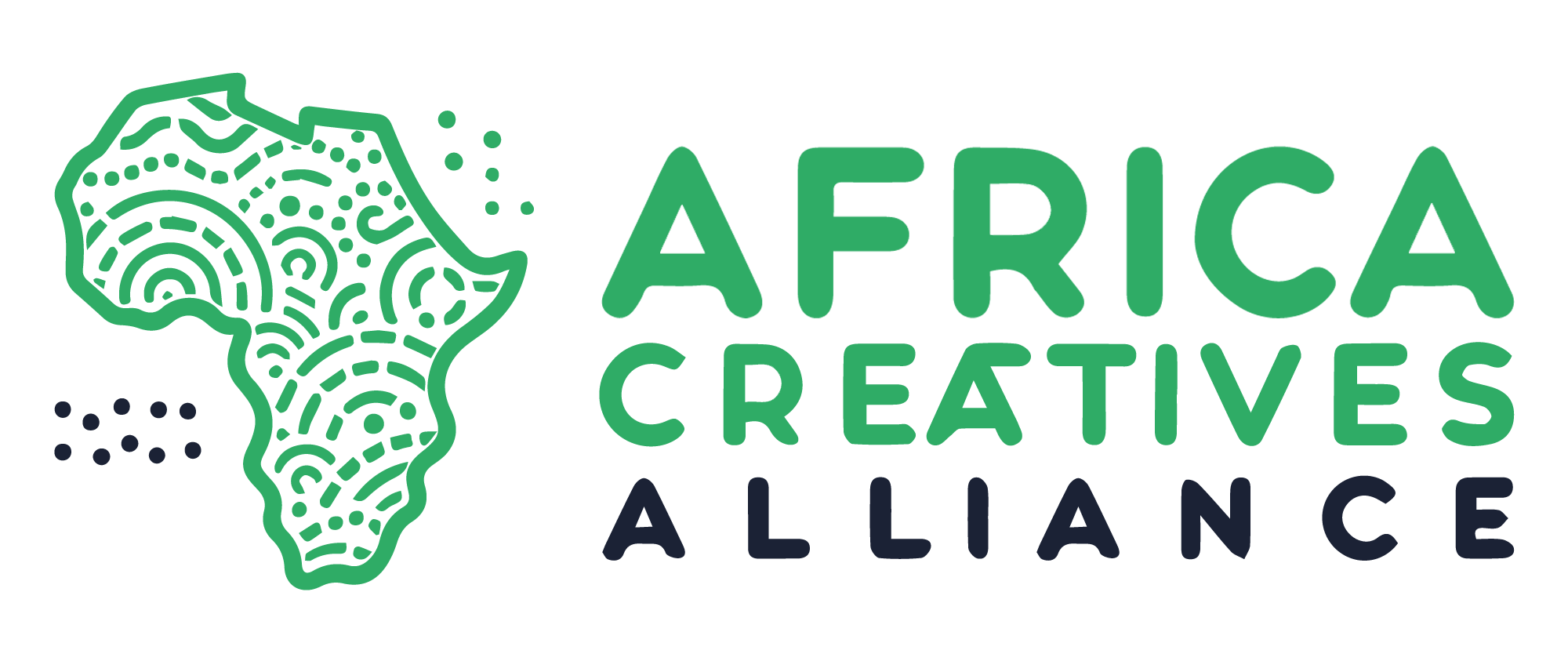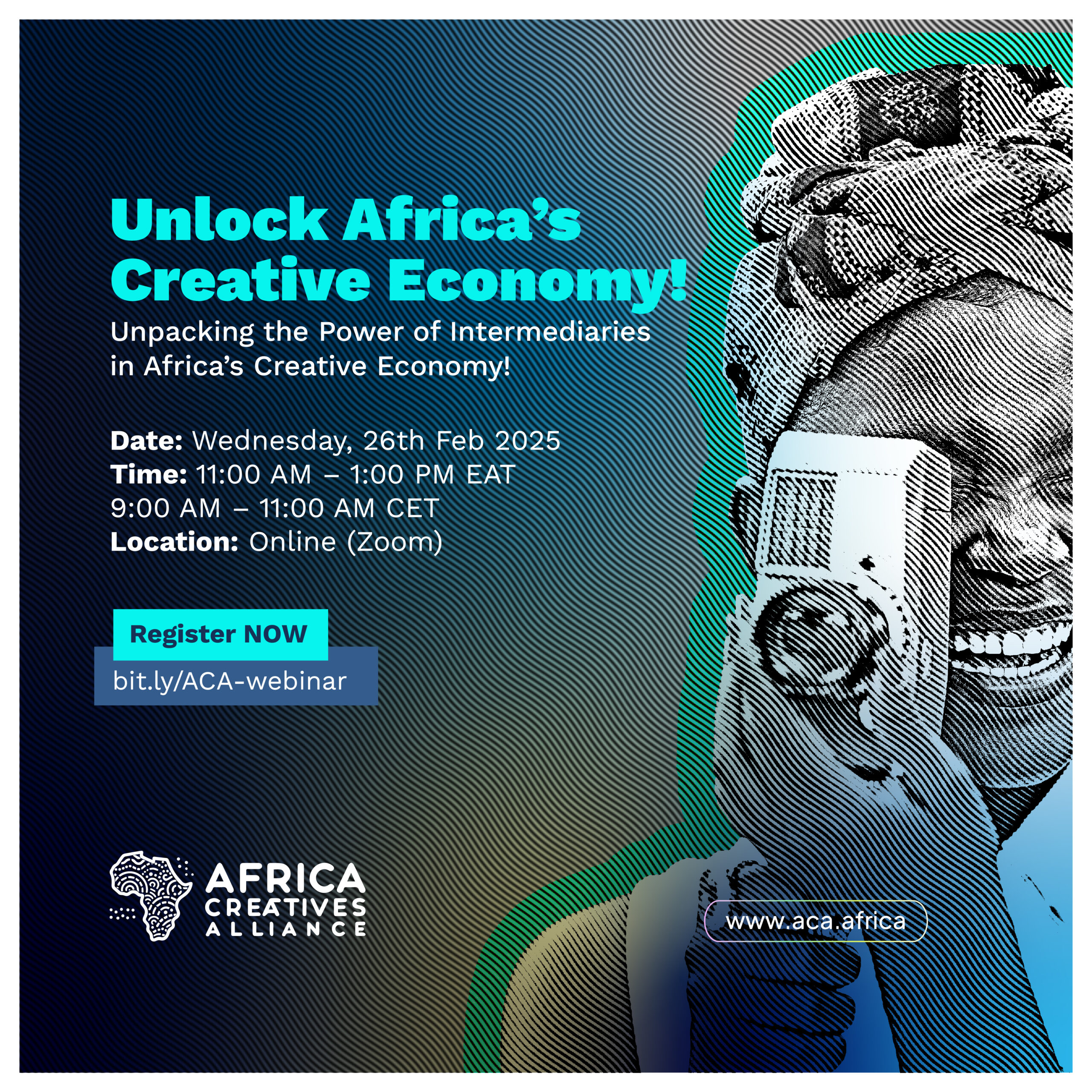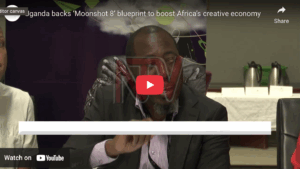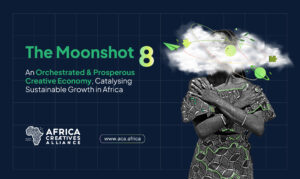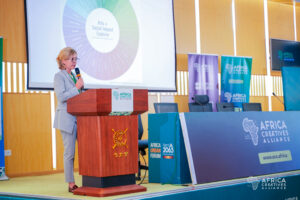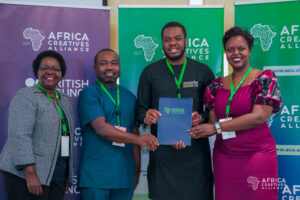We would love to hear from you, our community, on how the alliance can support your needs as you continue to empower creatives across the continent. We invite you to fill in the survey (linked here), results from the survey will inform the alliance on the interventions needed for you to thrive.
In December 2024, Africa Creatives Alliance (ACA) held a Webinar for Stakeholders Driving Systemic Impact, that included participation from representatives of development agencies, government entities as well as the private sector. The basis for this engagement was the ACA study, The Moonshot 8: An Orchestrated and Prosperous Creative Economy Catalysing Sustainable Growth in Africa.
On the 26th of February 2025 we held our first engagement webinar for intermediaries. Since summer 2025, ACA has been in the process of identifying intermediaries such as creative hubs, incubators, accelerators and makerspaces across the continent. The objective for this 1st webinar was to present some insights on the above-mentioned study and foremost gather further feedback from intermediaries on how ACA can best support them. However, in parallel we wanted to raise awareness around intermediaries as ecosystem and value chain catalysts, having the needed capacity to build on pivotal creative economy frameworks and interconnected ecosystems. The strategic development of intermediaries makes up a part of the needed pan-African collaboration to activate optimally the creative economy.
Several key topics pertaining to the creative economy were discussed and facilitated by experts and professionals:
Governance and business models for intermediaries
This discussion led by Amanda Gowa, Community and Program Development Lead of the ACA, brought to the forefront the need for CCI intermediaries to have effective governance and business models to support their long-term success and sustainability goals. So, the question is; how do intermediaries create an effective governance and business model? Regarding effective governance structures, one should consider having stakeholder inclusive boards that include creative community leaders to foster transparency and accountability, as well as ensuring they have diverse representation from different sectors such as the arts, government and private sector. Establishing advisory councils with experts in arts, technology and business is also recommended to guide strategy and decisions. Forming and re-enforcing collaborative networks with local, regional and international partners as well as engaging in policy making processes are key in ensuring a governing model is set up for success.
On the other hand, effective business models are equally important – without them intermediaries lack the right foundation to support their work with creative entrepreneurs. It is important to note that having an effective business model does not only pertain to access to funding but also how to leverage these funds to focus on scalability and sustainability of your entity. As an intermediary striving to have an effective business model, it is imperative to have clear metrics that measure social, cultural and economic impacts as well as regular assessments and report outcomes to stakeholders in order to build trust and credibility. The follow up question that intermediaries had to answer was “How do you measure the success and sustainability of your business model?” The common themes indicated by the answers were growth and impact, emphasizing the need for intermediaries to measure the effectiveness of their operations using clear indicators.
Entrepreneural Life Cycle and Value Chain
This discussion led by Sydney Sam, founder of Workspace Global and 2019 Forbes 30 under 30 successful entrepreneur in Africa, sparked crucial dialogues on how best to support creative startups. While engaging with stakeholders across the ecosystem to unpack the challenges and opportunities that intermediaries face in enabling CCI entrepreneurs to thrive, one of the key takeaways he identified was the role of specialized vs. agnostic incubators. While specialized incubators offer tailored industry expertise and targeted funding opportunities, agnostic ones provide broader networking and cross-sectoral learning. Many participants agreed that creative startups could benefit from both at different stages – beginning with specialized incubators to gain foundational industry knowledge and later transitioning to agnostic incubators for scaling strategies. Another important conversation centered on defining the various types of support structures: creative hubs, incubators, accelerators, and makerspaces. Some participants stressed the importance of distinct definitions to help channel resources effectively, while others argued that blurred lines between these spaces often stem from a lack of funding, forcing organizations to expand their scope to remain sustainable. Clearer definitions could help direct resources more effectively while ensuring intermediaries maintain their core functions.
The discussion also highlighted how intermediaries measure success, with key indicators including business formalization, revenue growth, job creation, and investment attraction. Many emphasized the importance of financial viability through multiple revenue streams and strong governance structures, ensuring that these organizations can sustain themselves while continuing to provide meaningful support. Beyond incubation, there was a broader discussion on the African entrepreneurial ecosystem and its role in supporting CCI entrepreneurs. Participants explored how SME networks, innovation hubs, and cross-border exchange programs interact with CCI startups. While some ecosystems facilitate easy connections between these entities, others still lack the necessary infrastructure for seamless collaboration. Strengthening these networks and creating more integrated entrepreneurial support systems emerged as a key need.
Trade & AfCFTA
This discussion facilitated by Gathige Wamaina, a Kenyan youth visionary and convener of the AfCFTA KAZINI Caravan, introduced his esteemed initiative as an awareness campaign that targets youth in and out of schools sharing knowledge about the potential the AfCFTA holds. The caravan has been convened twice (2021 and 2023) impacting over 6000 people in East, Central and Southern Africa. In his carefully considered opinion, the AfCFTA is an opportunity for the creatives of Africa to drive the Pan Africanism agenda from an information sharing perspective. For instance, art rules the world and information sharing through art penetrates deep into the society compared to any other means of awareness creation.
The AfCFTA is made up of various protocols, among them the Protocol on Trade in Goods, Trade in Services, Intellectual Property Rights, Protocol on Women and Youth in Trade. All these protocols are meant to facilitate the progressive implementation of the AfCFTA from a wholesomeness approach. Bearing in mind the crucial role of the Africa Creatives Alliance (ACA) is to anchor and develop the creatives, his recommendation was that the ACA positions itself as a contributor in the National Implementation Committees of the AfCFTA in all African countries in order to have a strategic position to anchor its actions from. This way, it would be meaningful to its members from a legitimate point of representation as well as from a resourceful platform where all factual information emanates from.
As the main target group of the ACA are the intermediaries from all circles of culture, the most sustainable ways to continue to engage with them and integrate them into the alliance is through organizing more information sharing webinars, workshops, symposiums as well as annual gatherings. Further, ACA’s mission should include proper organizing and knowledge management for intermediaries.
Investment
This discussion facilitated by Gbite Oduneye, Founder and Managing Partner of ODBA – an early-stage venture capital firm based in London, reinforced the need for intermediaries to have the right strategies in place to be able to access investment opportunities. This is a known challenge to the CCIs key players across the continent which the alliance is prioritizing addressing through one of its initiatives, a flagship investment project that involves co-creating an investment safe-incubator label to strengthen its ability to attract capital. Mr. Gbite posed an important question to the intermediaries in attendance, “How can intermediaries galvanize themselves to attract capital/investment?” Participants shared their strategies to attract capital and investment which included emphasizing clear value propositions, impactful services, strong governance, and robust financial sustainability.
However, these strategies will be in vain if there are no clear frameworks, infrastructure or policies in place governing the appropriate allocation of funds especially from an impact investment perspective. From a public funding perspective, the Connect for Culture Africa project operationalizes the African Union’s Plan of Action on Cultural and Creative Industries by lobbying national governments to allocate at least 1% of their national budgets to the arts, culture, and heritage sectors by 2030. According to the African Private Capital Association, 58 private capital investments, with a total reported value of $346 million, were recorded in Africa’s creative industries over the last decade (2012–2022). Having a clear view of the CCI ecosystems, creative economy cornerstones, their needs, and challenges, along with the broader opportunity within the creative economy, can create an appealing investment angle. Impact investment can further contribute by funding companies that act as catalysts for growth, offering creator tools, payment systems, and various solutions for development, production, distribution, and
Aggregation.
Intellectual Property (IP)
The discussion on IP was facilitated by Johanna Kouzmine-Karavaïeff, cultural & creative industries expert and the author of the ACA study “The Moonshot 8…”
Johanna highlighted that revenues for CCI professionals should not only come from goods and services, but also from IP. Still, this is a major challenge that represents a direct impediment to investment. To leverage value creation for the creators, solid frameworks are needed on national, regional and continental levels, may it be in terms of legislation, enforcement, incentives and awareness raising. Some examples on good practices were given, and equally ideas on the needs around IP frameworks.
There are Collective Management Organisations (CMOs) in at least 23 countries responsible for licensing, collecting and distributing royalties, protecting intellectual property rights, monitoring the usage of creative works and taking legal action when necessary.
Does your country have an active CMO?
In the Western African Economic and Monetary Union, a regional mechanism for private copying levies has been activated for the sales of CDs, DVDs, USB drives, smartphones or tablets. This means that a fee, applied to the sale price of these devises, go back to creatives for eventual loss of revenue from private copying by consumers.
CISAC, United Cities and Local Governments of Africa and Movement of Creative Africas (MOCA) have created ‘The Sustainable Creativity Label’ which is a collective certification brand allowing a city, community, organization, business, event, venue, or ecosystem to stand out by showcasing its commitment and respect for copyright. An example of a city where the label has been adopted is Sal in Cabo Verde.
Several questions were lifted, for example on how intermediaries can or could be active to building the right national level IP frameworks in their countries? How do current intermediaries work with IP? To the question on known good practices related to IP framework development, IP as collateral, or on IP valuation the answers were a bit vague. Answers referred to the notion of best practices in legal protection, IP legislation and IP awareness and registration, however without specification on countries.
Conclusion – How does the ACA support CCI intermediaries?
For ACA, this webinar underscored the importance of continuing to support creative intermediaries through funding access, policy advocacy, regional trade connections, and capacity-building initiatives. Many intermediaries still struggle with sustainability, and ACA has a crucial role to play in developing interventions that address these challenges. Bringing best practices to the forefront through knowledge-sharing platforms, research, and targeted partnerships can further strengthen the CCI ecosystem.
This webinar reaffirmed that while progress is being made, much work remains in ensuring that creative entrepreneurs receive the right support at every stage of their journey. Looking ahead, ACA’s role in shaping policies, fostering collaboration, and amplifying the needs of intermediaries will be instrumental in driving long-term growth for the cultural and creative sectors. Intermediaries present also expressed that they would like to know their peers better.
ACA plans to leverage the key takeaways from this session to develop interventions that best serve the needs of intermediaries.
